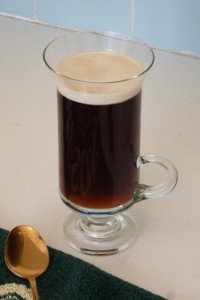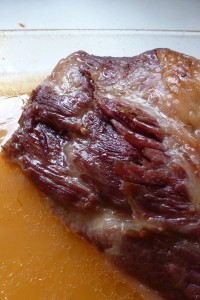The defining element of Irish stew is the use of lamb neck, or scrag.
Traditionally it is made more like a casserole than a stew. Actually it bares an uncanny resemblance to boulangère potatoes. Lamb, potato rounds, and other vegetables are layered in a casserole, then covered with stock or water and baked in an oven.
Lamb neck is a very tough cut of meat. I sear and braise the necks to tenderize, then use the shredded meat and cooking liquid to make the stew.
Once the necks are very tender to the tip of a paring knife, I remove them from the liquid and let cool briefly. While the necks are still warm I fold back the meat … Continue reading.

